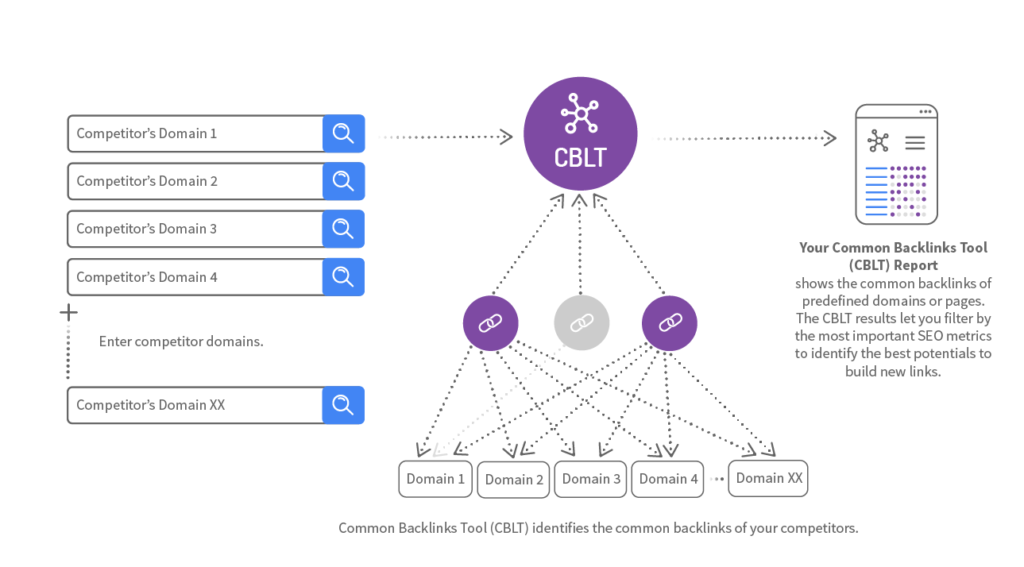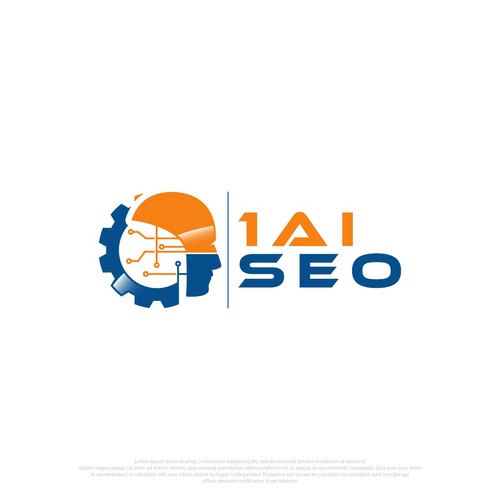
To rank high in Google, optimizing your blog's title is not enough. Google will crawl your site to search for keywords. A basic SEO strategy is essential to make your content easier to index and show. Another area to focus on when optimizing a blog for SEO is headings. These allow search engines and readers to navigate your content. When using headings, be sure to include keywords and phrases in the beginning, middle, and end of each section.
Meta description
Make sure you use an organic tone in your meta description when writing for SEO blogs. Your meta description will answer the query of a user and highlight high-quality content. Websites that look like spam are a negative impression on users. Writing for people, and not robots is the golden rule that will ensure you get more clicks. Here are some suggestions to help you craft a compelling meta-description.
Make it engaging: Include your main keyword in the meta description. Google does NOT count your meta-description when indexing your webpage, but it does help to grab a user's interest. The key is to keep your meta description between 140 and 160 characters long, and bold the most important words. Your meta description should include a call-to-action, such a link to your site. A good meta description also has an appealing call to action.
The meta description gives you the opportunity to market your company. It is a great tool to grab a user's interest and persuade him to click on the link. A well-written meta description can help increase site traffic and sales. To encourage users, a call for action should be placed at the end. If your description is too long or contains outdated information, your meta description may be useless.
A meta description is not only readable but can also increase click-through rates. The meta description, when used correctly can improve your organic traffic as well as your rankings. Google's search engine result pages play a minimal role in your meta description. A poorly-optimized meta description can result in your page ranking on page four rather than page one. Even if your click-through rates are low, it's still worth writing a meta description.
Keywords in the title
Make sure you are using focused keywords in the title. This will help you get the most out your SEO blog post. Keywords in the title help you establish the direction of your content and how likely it is to reach your target audience. Search engines categorize web pages based the keywords included in them. These crawlers have advanced their technology to be able to judge the quality content on the Web. For better search rankings, make sure to include keywords in your titles.
If you own a gym, use phrases related to crossfit training or crossfit gyms. Use only one keyword per article. Using too many keywords in the same article can look spammy to the search engines, which makes your content less valuable to your readers. Your articles may rank higher than shorter-tail keyword phrases if you use long-tail words. These phrases can help you rank higher for a keyword in Google.
The title of your SEO website should not exceed 70 characters. Title tags should contain the keyword focus as close as possible to the beginning. The benefit that your post provides should be conveyed by your chosen keyword. Keyword stuffing and boilerplate titles is a bad idea. Google warns about keyword stuffing. You should use a strong focus keyword for your title, and ensure your audience can easily understand the content.
Your keywords should be included in your title. But that's only half of the battle. Your article's title should have a good length, not more than 60 characters or 575 pixels. Make sure the title is true to its promise and easy to read. It's all about planning, and remember that SEO is a business, so your title should be as effective as possible.
Links to internal resources

There are many ways to improve the search engine optimization (SEO) of your website or blog. To direct users to different pages within your website, one option is to use internal linking. These links can take you to different pages and content. This not only improves your user experience, but it also increases your search performance. Remember that internal links do not work the same as backlinks and readers will be unable to find them by themselves. This is possible if you use internal links in the right locations.
Adding relevant internal links in your blog is an SEO-friendly way to attract and retain readers. Sites use different link styles, so it is important that you choose the correct words and anchor texts when creating a linking strategy. Internal links can be used to increase attention and make your visitor stay longer on your site. You want to get the best out of your internal links. Make sure they point back at relevant content and offer a helpful solution.
Internal links should always point to the main keyword. Google won't penalize you for using exact match anchor text. However, it is unlikely that Google would. However, it should not be keyword-stuffed. It is not a good idea to manipulate the anchor text to boost your search engine rankings. This tactic violates Google's Webmaster Guidelines. This is a much more effective method than you might believe.
The creation of content on topics relevant to your core service is another way to optimize internal linking. For example, a landscaping company in Columbus generates 390 searches a month, far less than the search volume for the phrase "best smartphone." SEO can be improved by strategically including relevant internal links in your blog articles. You can do this by anticipating what questions your users might have while browsing your website.
Schema Markup
Schema Markup can be added to blog posts to improve your search engine rankings. To create schema markup, visit Google Structured Data Markup Helper. You simply need to enter the URL for your website, select a category, then copy and paste the HTML code. This tool creates a tag manipulator as well as a rendered page in new windows. From there, you can click individual elements to tag them.
There are three types of schema markup: NewsArticle, TechArticle, and Microdata. Each type can have a different set of flags, depending on the content of the post. NewsArticle is a category for articles that relate to current events. TechArticle may have flags that indicate the technical content of the article. An example is a HowTo article. These flags could indicate the technical level of its author, the software used and any dependencies.
Google has simplified the process of creating schema. It allows you to tag data so that similar content is displayed in search results. Schema markup is a good way to increase brand awareness. But if you're a small business that has a local location, you should use schema to advertise your business. Schema can be used to promote events and your business. There are many benefits to schema markup being used in SEO blog posts. You can find the links below if you are unsure of what to use.
In addition to being a great way to improve search engine optimization, you can use schema to optimize your content. Search engines can understand different elements on a website's markup. Schema markup can help you identify ingredients, instructions, and ketogenic diets when you blog about food. You can also use schema for your review blog. In general, the more relevant content you have to a user’s query, the higher your search engine rankings.
Copyrights for images

It is crucial to verify the permission of any images you plan on using for your SEO blog. Many PR agencies don't allow images to be shared from their websites. You may not have the right to use these images. Contact the owner directly to find out. In many cases, the owner is more than willing to grant you permission to use the image. These tips will help you comply to the law.
Google images should not ever be used. Before you use any image from Google, you need to get permission from its owner. Google allows you to search images, but only if you get permission. You can request permission to use the image if you have trouble finding it. This will ensure you don't violate any copyrights. Image copyrights could make all the difference between a successful SEO blog or a website that is removed from search engines.
Check the copyrights on any image you wish to use in your blog. While it might be tempting to use images found on Google Images, it's illegal. By stealing images without proper permission, you're discrediting the work of the image creator and exposing yourself to legal repercussions. If you have permission from their owner, fair-use images and public domain photos are allowed. You can consult an intellectual property lawyer if you are still unsure.
Images used for SEO blogs should have the same author and attribution. Photos that are funny or creative will be more likely to get used for SEO purposes. However, you should always read the terms of the license. There are some images that you can use for free, but others have restrictions. If you're unsure of the author, don't use them. You may be violating copyright if they're not free from royalty. Even worse, you could face a lawsuit, which will cost you a lot of money.
FAQ
SEO: Why is it important?
There are many reasons SEO is important.
First, it helps increase the number of visitors to your website by making sure that your website appears high in search engine results.
A second benefit is the ability to increase conversions. Users can be sure they find what they want when they type in their search bar.
It increases brand awareness by helping customers to find your business online.
It also improves the user experience by allowing users to navigate quickly through your website.
Finally, it increases trust with potential customers by showing that your business cares enough about it to ensure it ranks high in search engines.
Why Should I Use Social Media Marketing?
Social media marketing can be a great way for new customers to connect with existing ones. Engaging with others via comments and likes can help you build a community around your brand. This will make it easier for potential customers find you online.
Do I require a digital marketing company?
Realize that you need extra support for your business before it is too late. A digital agency is designed to offer professional services to small businesses. They can help you market your company online, and they are up-to-date on the latest trends.
They can assist you in developing your strategy and implementing it.
Do I hire an agency or do it myself?
There are many benefits to hiring an agency to help you get started. First, you can get everything you need from an agency. They also provide training, so you can be sure you understand the process before you hire them. They are capable of handling all tasks that will help you rank your website higher.
Where do I get my keywords from?
You'll need to consider what kind of products or services you offer and who your ideal customer is, and then look for standard terms related to those things. Once you have your list of phrases in hand, you can use Google Keyword Planner tools to identify the phrases people search for. Or you can go straight to search engines like Bing or Yahoo.
Will A Content Strategy Help Me Get Better Ranking?
A content strategy is how you plan to create content over time. It contains keywords and information about your company, such as topics. Having this plan in place before you start writing will ensure that you don't produce too little or too much content.
What is Onpage SEO?
On-page seo refers the actions that you take on your website to increase its rank in search engines. On-page SEO includes things such as site architecture and page titles, meta tags and image alt texts. Off-page SEO is activities that are not related to your website and will help improve its rankings. These activities can include backlinks as well as social media shares and press releases.
Statistics
- If two people in 10 clicks go to your site as a result, that is a 20% CTR. (semrush.com)
- : You might have read about the time that I used The Content Relaunch to boost my organic traffic by 260.7%: (backlinko.com)
- 93%of online experiences today begin on search engines. (marketinginsidergroup.com)
- Deleting those 10k pages is one of the main reasons that he improved his site's organic traffic by nearly 90%: (backlinko.com)
- 64% of marketers actively create SEO campaigns because they help hit multiple key performance indicators (KPIs), including increasing traffic, helping your site rank for relevant keywords, improving your conversion rate, and much more. (semrush.com)
External Links
How To
How do I set up my first blog?
It's simple! WordPress is a wonderful tool to help you create a blog. Users can easily edit the appearance of their blogs by adding themes, changing fonts and colors, and customizing the layout. Users can also install plugins to modify certain elements of their websites based on visitor activity.
Many free templates are available to download from wordpress.org and premium templates that cost money. Premium templates have additional features, such as more pages, extra plugins and enhanced security.
Once you have downloaded your template, sign up for a free account at a hosting provider in order to upload your files and to run your blog. While many hosting providers offer free accounts, there are often limitations on how much space you have, how many domains can you host, and how many email addresses you can send.
If you plan to use more domain names, you will also need to purchase separate email addresses. This service may be charged by some hosts.
A blog hosted online is a great way to start blogging if it's your first time. Most hosts offer unlimited storage space, meaning your files won't be deleted even if you accidentally delete them.
Many hosts allow users to host multiple domains. This means you can have multiple sites with the same hosting package. It is possible to avoid multiple email accounts by registering for one interface, allowing you to manage all of your sites from the same place.
Some hosts have social media sharing buttons built into their dashboards. This allows visitors to quickly and easily share content across the internet.
Many hosting providers offer tools that allow you to manage your blog. You can check your site's performance statistics, see how many visitors each post has received and compare your traffic to similar blogs.
These tools can make managing your blog easier and faster, so they're worth checking out before you choose a hosting plan.
To sum up:
-
Pick a topic that's relevant to you business.
-
Create engaging content;
-
Optimize your site using SEO techniques;
-
Promote your site using social media channels;
-
Keep an eye on your statistics to see if you can make any changes.
-
Last but not least, make sure to keep your blog updated.
The bottom line is to create great content, promote it effectively and measure its success.